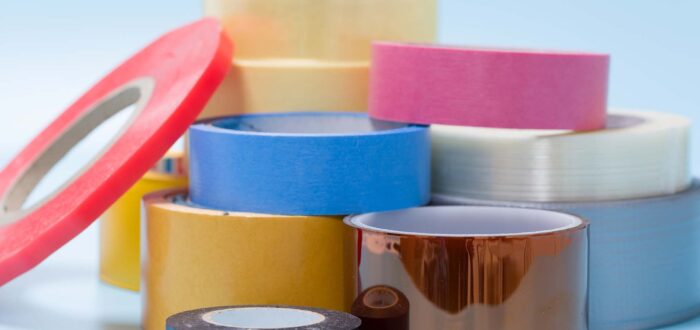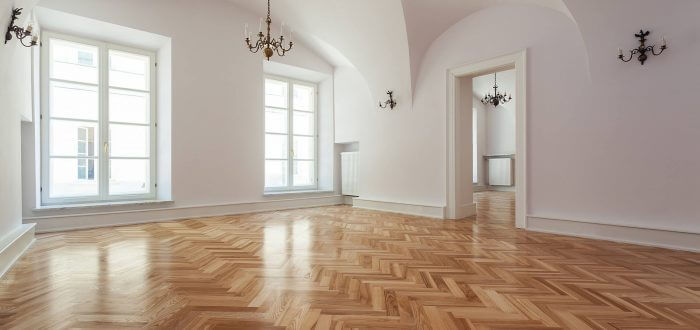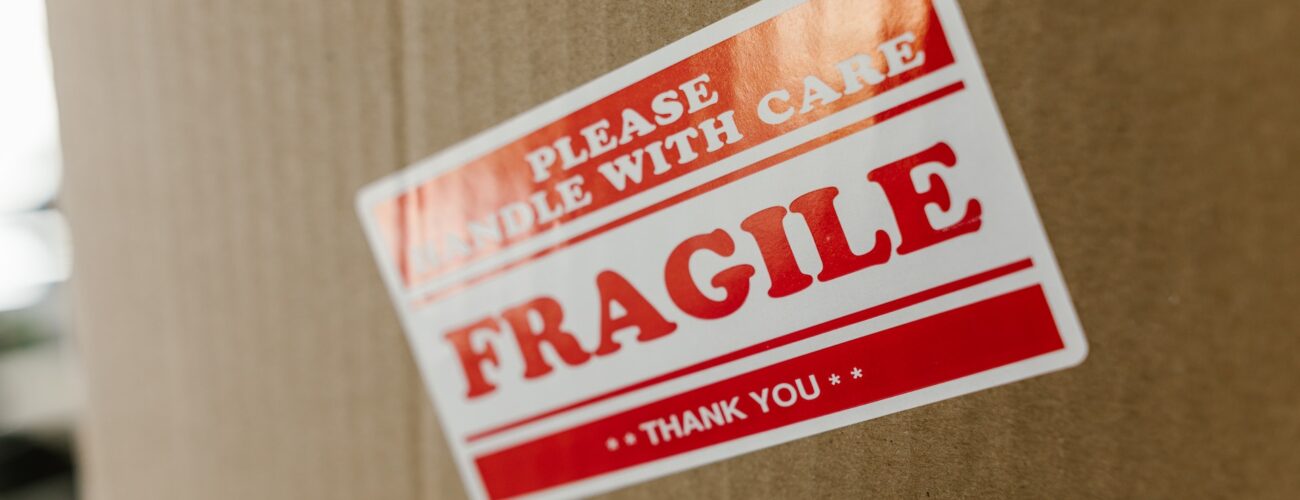

Unbreakable Strategies – The Best Way to Wrap Breakables for a Move
Posted in How-to,Moving Tips & Tricks on April 9, 2024
When it comes to moving across country, the safety of fragile items is paramount. This guide on the best way to wrap breakables will help you ensure breakables arrive at their destination in perfect condition. Packing breakables safely involves more than just wrapping items in newspaper – it’s about understanding the right materials, techniques, and precautions needed to shield valuables from the bumps and jolts of transit.
Moving delicate items requires careful planning, from selecting the right packaging materials and employing specific techniques for wrapping and boxing to sealing, labeling for safety, and strategic loading. Creating an inventory ensures everything is accounted for. These steps, along with clear labeling and mindful loading and unloading, safeguard fragile items, making the move smoother and less stressful.
Understanding Breakables – What Requires Special Attention
When preparing for a move, it’s crucial to first understand which of your belongings qualify as breakables and require special attention. This category extends beyond the obvious glassware and ceramics to include a broader range of items that are susceptible to damage if not properly handled and packed.
Electronic devices, with their delicate internal components, also fall into this category, as do antique pieces, which may not only be fragile but also irreplaceable. Identifying these items before you begin packing is the first step to ensuring their safety.
Start by Identifying Fragile Items
The process of identifying fragile items involves more than a cursory glance at belongings. Start by going room by room, making a detailed list of items that are either made from breakable materials like glass and porcelain or contain delicate parts, such as electronic devices and instruments.
Don’t overlook items that might not immediately seem fragile, such as framed art and large mirrors. Remember, the goal is to prevent any damage and prevent things from breaking, so if there’s any doubt about an item’s durability, err on the side of caution and include it in the list of items needing special care.
Discover The Importance of Inventory
Creating an inventory list of breakable items before a move offers a strategic advantage in ensuring the safety and accountability of valuables. This meticulous list serves as a detailed record, enabling you to track each item from departure to arrival.
Not only does it aid in the organization process, but it also becomes invaluable in the event of damage or loss, simplifying the process of filing insurance claims. By having a comprehensive moving inventory, you ensure that all fragile items are accounted for before and after the relocation, providing peace of mind and allowing for a smoother transition to the new home.
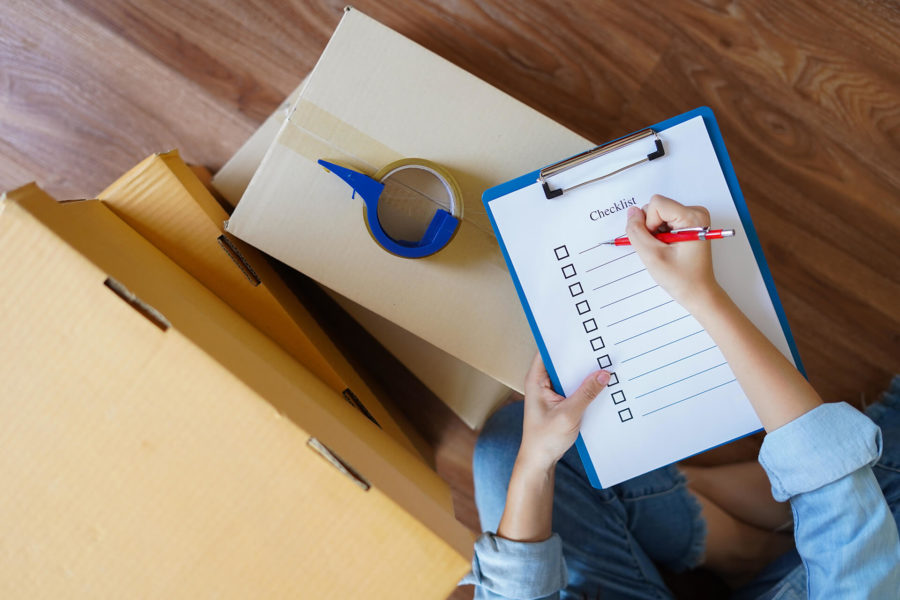
Gathering Essential Fragile Packing Materials
The success of moving fragile items largely depends on the quality and appropriateness of the packing materials used. Ensuring you have all the necessary supplies before you start wrapping can make the difference between valuables arriving intact or ending up damaged. Selecting the right materials is not just about cushioning but also about providing support and preventing movement within the boxes during transport.
Selecting the Right Supplies Is Crucial
The cornerstone of safely and efficiently packing breakables is choosing the right supplies – together, they provide a comprehensive defense against the rigors of moving cross country. The list of essentials includes:
- Bubble wrap – Ideal for wrapping individual items to protect against shocks and vibrations. Its air-filled bubbles provide excellent cushioning for fragile items.
- Packaging paper – Uninked, soft paper is perfect for wrapping items before placing them in bubble wrap, providing an initial layer of protection and preventing scratches.
- Foam peanuts – These are used to fill empty spaces in boxes to prevent items from shifting and colliding. They adapt to the shape of the packed items, offering additional cushioning.
- Sturdy boxes – Opt for heavy-duty, double-walled cardboard boxes in various sizes. Their strength and durability are crucial for protecting breakables during the relocation.
Innovative Packaging Materials
In the quest for protecting fragile items during a move, innovative packing materials found within a home can be both cost-effective and environmentally friendly. Towels and blankets serve an excellent purpose in wrapping around larger, sensitive items or cushioning the bottoms and sides of boxes to absorb shock.
Clothing, too, finds a new use in this process – soft garments such as t-shirts and sweaters can delicately enfold glassware or ceramic pieces, providing a snug barrier against knocks and bumps. Socks, often overlooked, emerge as champions for cradling smaller breakables or filling gaps in packing, ensuring a snug fit within boxes.
Even bed sheets can be repurposed, offering a versatile solution for wrapping large items or creating protective layers between stacked items. This approach not only leverages items that need to be packed anyway but also adds a sustainable layer of protection for valuable belongings, marrying practicality with eco-consciousness in the packing strategy.
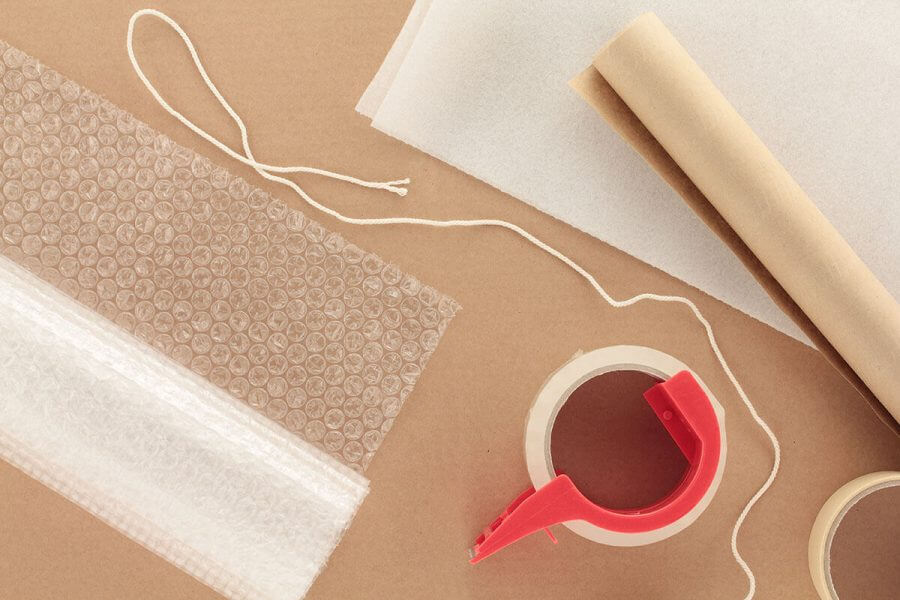
Packing Techniques for Ultimate Protection
For ultimate protection, mastering the art of wrapping and box packing is essential. The importance of this step cannot be overstated, as it forms the foundational layer of protection, ensuring a smooth and safe move.
The Art of Wrapping Breakables – The Beginning
Begin by laying out the bubble wrap or packaging paper on a flat surface. Place each item in the center of the material and wrap it snugly, ensuring full coverage. Secure the wrapping with tape to prevent it from unfurling.
For items that are particularly fragile or have sharp edges, double wrap for added security. The key is to create a cushioned barrier around each item, which not only protects against direct impacts but also minimizes the risk of scratches or chips. This meticulous approach to wrapping is a foundational step in safeguarding valuables throughout the process of long-distance moving.
You Need to Use Adequate Box Packing Strategies
Once the items are wrapped, the next step is to pack them into boxes in a way that minimizes movement and maximizes protection. Begin by creating a cushioned layer at the bottom of the box with bubble wrap, foam, or crumpled paper. Place the heaviest items first, followed by lighter ones, and use dividers or individual cells for glasses and stemware to prevent clinking and potential damage.
After all items are in place, fill any remaining empty spaces with foam peanuts or crumpled paper to prevent the contents from shifting during transport. This technique of careful layering and space-filling ensures that each item is snugly fitted within the box, offering the ultimate protection against the jostles and jolts of moving.
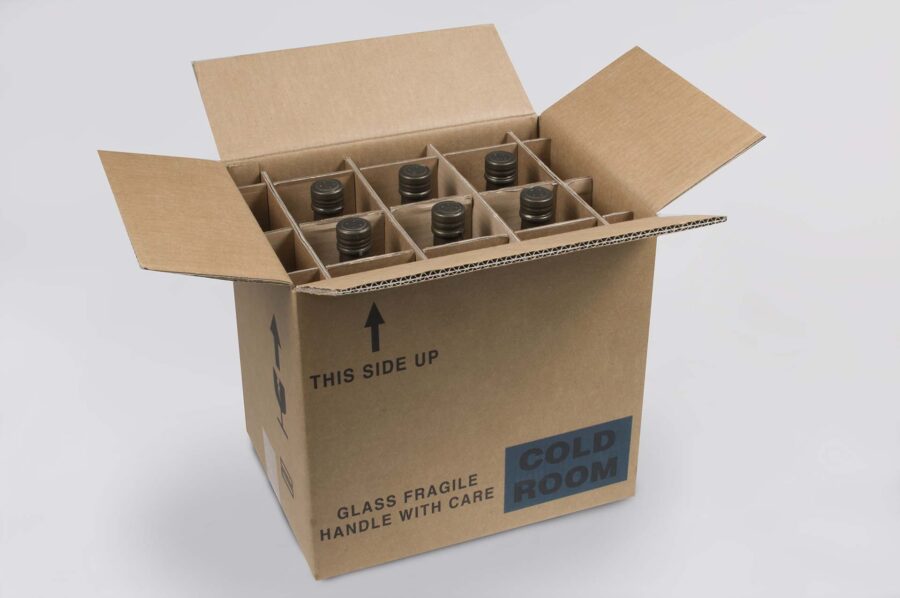
Special Tips for Specific Items
When it comes to moving delicate items, specific strategies can make all the difference. For specific items like glassware, ceramics, electronics, and antiques, applying tailored packing techniques ensures their safety during a relocation.
Packing Glassware and Ceramics
When packing glassware and ceramics, it’s vital to provide ample cushioning to each piece to safeguard against cracks and chips. Begin by wrapping each item individually with bubble wrap, ensuring all sides are protected, and seal with tape.
Use compartmentalized boxes, if possible, to keep items separated and secure.
Avoid stacking heavy items on top of glassware and ceramics, as the weight can cause damage during the move. Instead, place these items in single layers or use cardboard dividers between layers for added protection.
Securing Electronics and Antiques
For electronics and antiques, the key to safe transport is stabilization and proper cushioning. Whenever possible, pack electronics in their original boxes, which are designed to fit them perfectly.
For antiques and electronics without original packaging, wrap each item in soft packaging paper followed by bubble wrap to protect against shocks. Secure any loose parts or wires to prevent them from causing damage. Finally, fill any voids in the boxes with foam peanuts or crumpled paper to keep the items from moving and provide additional shock absorption.
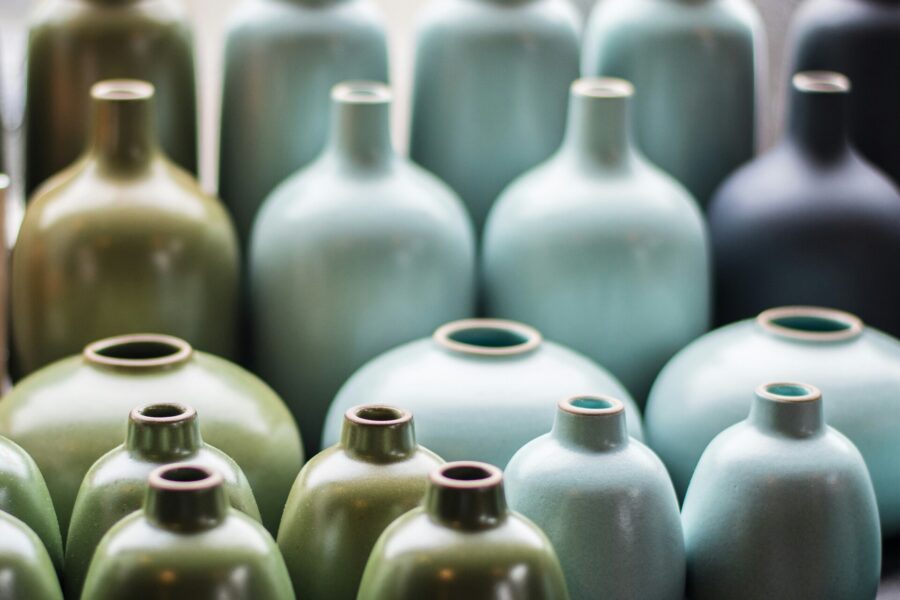
Sealing and Labeling for Safety
To maintain the integrity of fragile packages during a move, proper sealing and labeling are crucial steps that should not be overlooked. Ensuring boxes are securely sealed involves more than just a single strip of tape – it’s about reinforcing their structure for the journey, while clear labeling practices are crucial to signal the need for careful handling.
Proper Box Sealing Techniques
Effective sealing is critical to protect belongings during the relocation. Start by securing the bottom of each box with tape, applying multiple strips across the center seam and edges for added strength. Then, after packing, seal the top in a similar fashion, ensuring the tape extends up the sides of the box to reinforce its structure.
Pay special attention to the corners and seams, applying extra tape to these areas to guard against splitting under weight. This approach not only keeps the items contained but also supports the box in withstanding the rigors of transport.
Clear Labeling Practices Make the Biggest Difference
Clear and precise labeling can significantly influence the handling and safety of boxes during a move. Label each box as “Fragile” and ensure that long-distance movers are aware of the need for gentle handling. Additionally, indicating the top side of the box helps maintain the correct orientation, safeguarding against unnecessary tilting or flipping that could disturb or damage the contents.
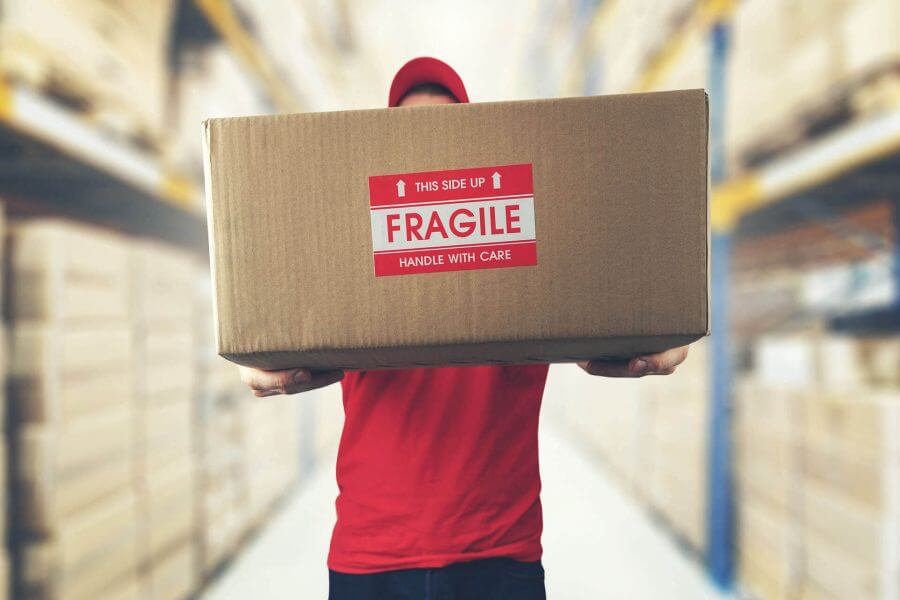
Loading and Unloading Breakables – the Final Steps
The process of moving fragile items doesn’t end with packing. How these items are loaded into the moving truck and later unloaded plays a critical role in ensuring they arrive safely at their new home.
Make Strategic Loading Plans
Loading fragile items requires thoughtful planning and placement within the relocation truck. Start by ensuring that all boxes containing breakables are clearly marked as “Fragile.” These items should be loaded in such a way that they are kept away from heavier items that could shift and crush them.
Placing fragile boxes on top of heavier, more stable boxes can help, but ensure there’s a flat, even surface to prevent any tipping or sliding. It’s also essential to secure these items with straps or bungee cords to prevent movement during transit.
The goal is to create a stable environment within the truck where items are protected from the forces of motion. And of course, if you want to make sure your valuables are moved safely, it might be best to hire cross-country moving services from a reputable moving company such as Cross Country Movers. To find a reliable company and avoid relocation scams, make sure to check if the company is legitimate on sites like the Better Business Bureau.
Unloading and Unpacking Breakables After a Move with Care
Once you’ve arrived at the new destination, the unloading and unpacking process should be approached with the same level of care as the packing and loading phases. Begin by unloading these items first, if possible, to reduce the risk of them being accidentally bumped or dropped as more items are moved.
Handle each box gently, and place it in an area where it can be immediately unpacked or safely stored until ready. As you unpack, inspect each item for potential damage, allowing you to address any issues promptly. This careful approach ensures that breakables are not only protected during transit but also upon arrival, allowing for a seamless transition into the new space.
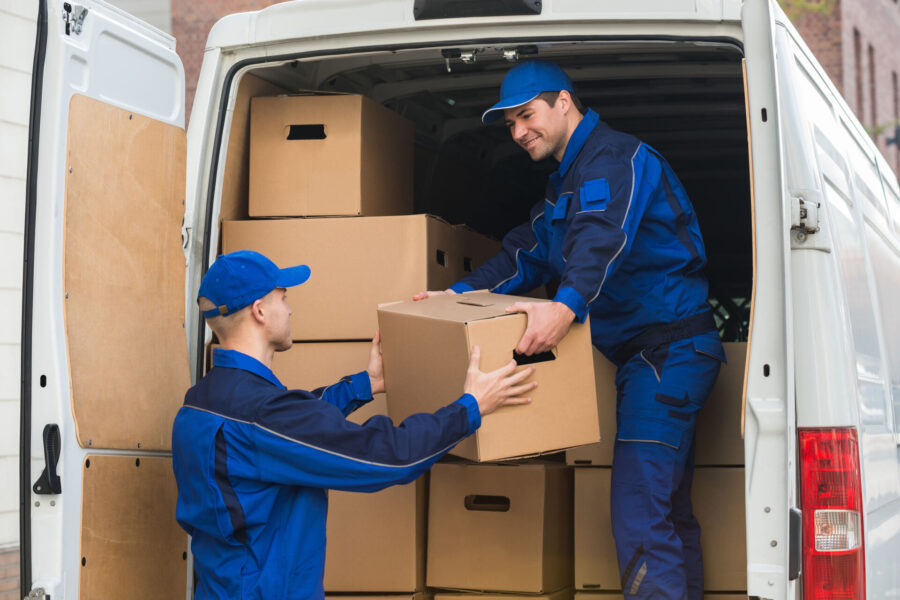
From Bubble Wrap to Peace of Mind – Mastering the Move With Fragile Treasures
The successful relocation of breakable items hinges on a comprehensive approach that spans from meticulous preparation to strategic execution. Whether it’s utilizing the right amount of bubble wrap, selecting sturdy boxes, or mastering the packing of large, delicate items, each step is crucial.
While many items can be safely moved with diligent preparation, some treasures may warrant the expertise of professionals. So, contact us at Cross Country Movers and allow our team to take care of both packing services and safely transporting your valuables to the new home.
FAQ
How Much Bubble Wrap Should I Use for Each Item?
Wrap each item until it feels cushioned and secure, typically two to three layers. The item should not feel the impact when gently tapped.
Can I Reuse Old Boxes for Packing Breakables?
Yes, if they’re sturdy and free of damage. Reinforce with extra tape, especially on corners and seams.
What’s the Best Way to Pack a Large Mirror or Picture Frame?
Use painter’s tape to make an ‘X’ across the glass to prevent shattering, wrap the item in bubble wrap, and place it in a flat, mirror-specific box. Fill any gaps with packaging paper or foam.
How Should I Handle Unpacking Items That Appear Damaged?
Document with photos immediately for insurance purposes. Unpack carefully to assess the full extent of the damage before deciding on the next steps.
Are There Any Items Too Fragile to Move Without Professional Help?
Highly delicate, valuable, or sentimental items like antique clocks, fine art, or oversized glass pieces may require professional packing and moving services to ensure their safety.

